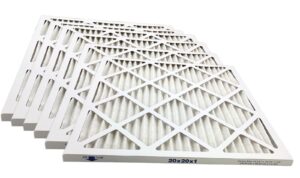The most major issue here is lint. Dryers are infamous for producing a lot of lint, as you’ll learn while cleaning out your filter. Many people assume that their lint trap will catch everything and that all they need to do is empty it after each wash. However, most of this escapes the lint trap and begins to gather within the dryer and the heating element! If you’re still not persuaded, do this experiment: pull out your lint trap and check behind it; you’ll be surprised at how much lint there is. Lint can also develop on the heating element of your dryer, causing it to overheat and possibly catch fire. This is why vent and dryer cleaning is so important.
Outside of the Dryer
There are various poor dryer vent practices that can obstruct airflow and create lint buildup; some of the most common and serious dryer vent mistakes are listed below:
Lint accumulates in dryer vents that are too long or have too many bends, as well as those that do not have a duct booster. When it comes to dryer vents, we always advise keeping them as short and straight as possible.
Using combustible and brittle plastic or foil duct extenders. When it comes to vents, we at ProClean always advocate using metal vents. Metal vents will not be crushed as easily, as limited airflow caused by crushing can cause overheating and premature device damage. In fact, most state and local governments have made metal dryer venting a requirement for new structures.
There is insufficient space between the dryer and the wall. Most people make matters worse by positioning their dryer flush against a wall, which compresses the venting material. The combination of restricted airflow and lint accumulation will prevent a dryer from drying thoroughly. As a result, the internal temperature of the appliance rises.
Failure to clean the ducts properly.
If you’re worried about your dryer, give us a call to schedule a dryer vent cleaning.



